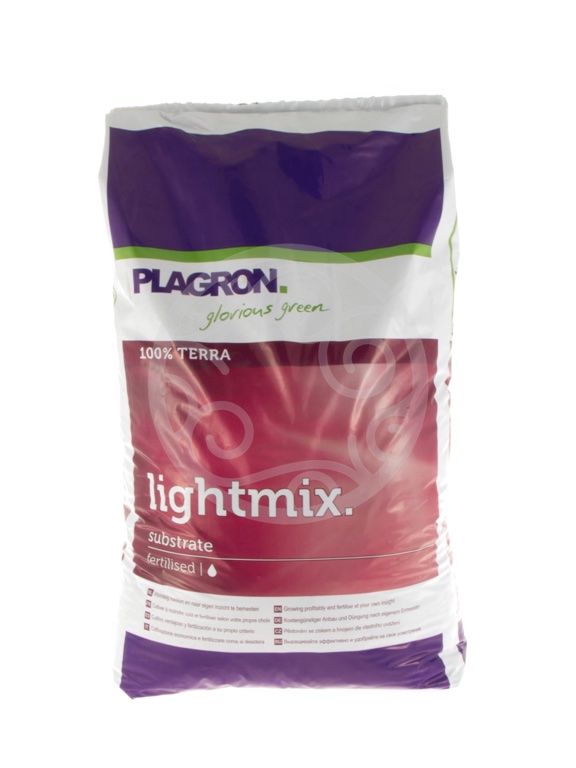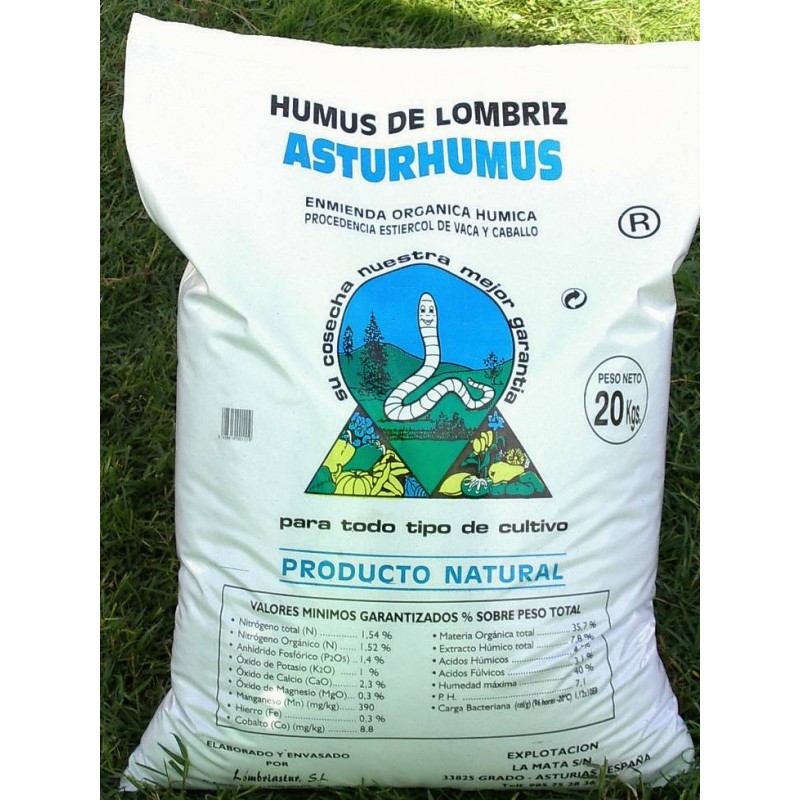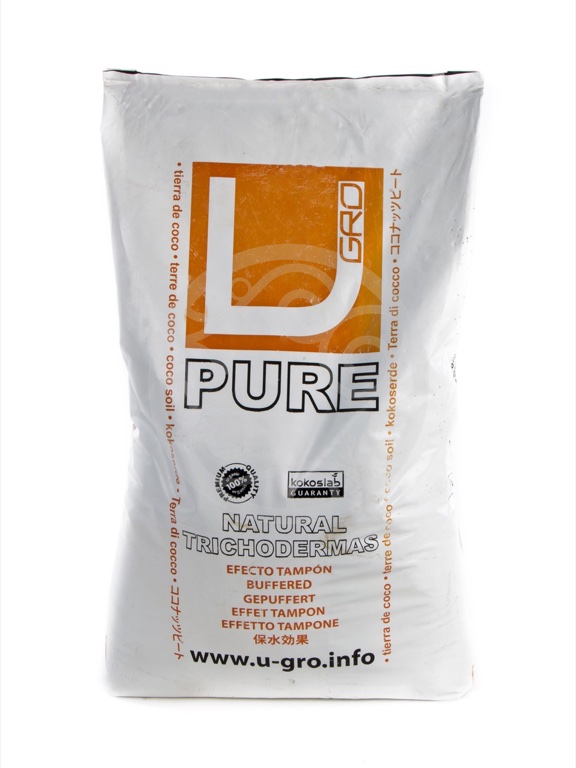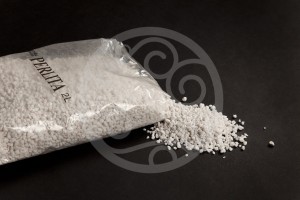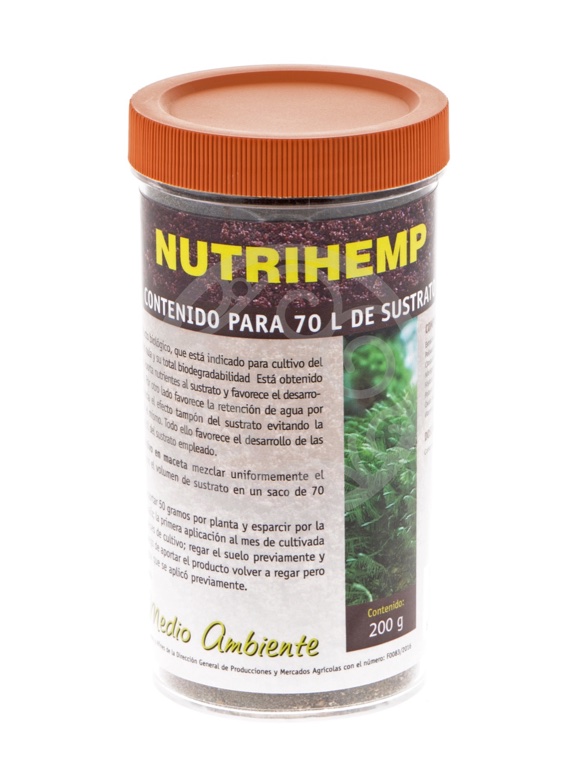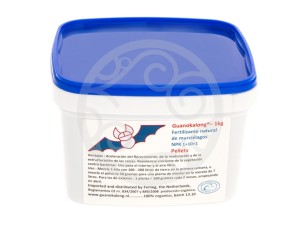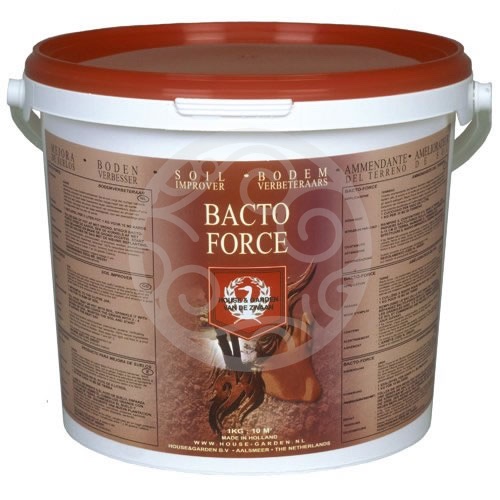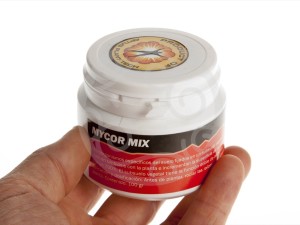How to prepare a good organic substrate for cannabis
List of contents
- Mixture of organic soil for cannabis recommended by Philosopher Seeds
- Feeding of the cannabis plants in organic crops
- Basic components of the cannabis substrate
- Solid organic fertilisers for cannabis growing
- Liquid organic fertilisers for cannabis growing
- Permitted minerals in organic farming
- Bacteria and micro-Organisms for the growing of cannabis
Prepare a good biological substrate to grow marijuana indoors or outdoors is a common issue, and with this post we will try to help you make your own mix. This growing method certainly provides the best quality of marijuana that we can harvest. It allows that terpenes aren’t altered by flavours from, sometimes too much aggressive, fertilisers.
Mixture of organic soil for cannabis recommended by Philosopher Seeds
The Philosopher Seeds Team works with all kinds of substrates and cultivation systems to perform growing tests, but when it comes to do genetic selections to decide which will be the upcoming strains that will enter in catalogue, we all opt to use the mixture of soil and amendment as follows:
For 100 litres of substrate:
- 70 liters of substrate type “Light Mix”
- 20 liters of Worm Humus (improves the substrate in many aspects)
- 5 liters of Coco Fibers (aerates the substrate and retains water)
- 5 liters of Perlite (aerates the substrate and retains water)
- 200 gr of Nutrihemp (favours the plant growth)
- 1,5 Kg of Bat Guano Powder (favours the bloom)
- 450 gr of Bacto Force (improves the soil by adding beneficial bacteria, fungi and enzymes)
- Mycorrhizae, the amount depends on the Brand (favours the rooting)
In case of using large plant pots, some opt to put a layer of clay pebbles or pozzolana in the bottom of the pot to improve drainage.
If you need an amount of substrate below 100 liters, it will be easy to calculate the percentages of each element to get the desired quantity. In general, the substrates type ‘Light Mix’ are adapted to the growing of marijuana and already includes coco fiber and perlite, so its adding is optional. If you decide to don’t add it you should replace it with a 10% more of Worm Humus.
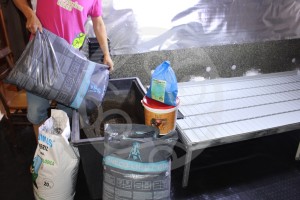
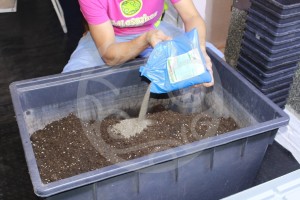
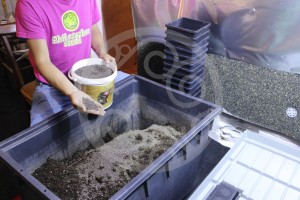
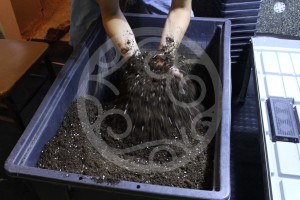
This soil mix for cannabis is so complete that you don't have to add any type of fertiliser during the entire crop. Only irrigate with water. Some sativa strains such as Spicy CBD / SuperJuani need a slightly increase of the dose of Nutrihemp to avoid a yellowing at the half of the flowering period due to a nitrogen deficiency.
If the water that we use has a suitable, or nearby suitable, pH level for the growing of marijuana in soil, it wouldn’t even be necessary to control it.
In short, this soil mix greatly eases growing by not having to look after adding many products during the different plant stages.
Feeding of the cannabis plants in organic crops
Marijuana crops can be grown completely organic. The main strategy to feed plants in Super Soil farming systems is the conservation and maintenance of the fertility of the substrate, which depends on the contribution and the content of organic matter in it. To maintain the micro-organisms alive in the soil during the entire crop, it’s important that the substrate is never too dry.
The Philosopher Seeds strains are perfectly adapted to organic growing methods, they will transmit all its organoleptic potential, as the Sweet Love marijuana with very well marked lemony and earthy undertones.
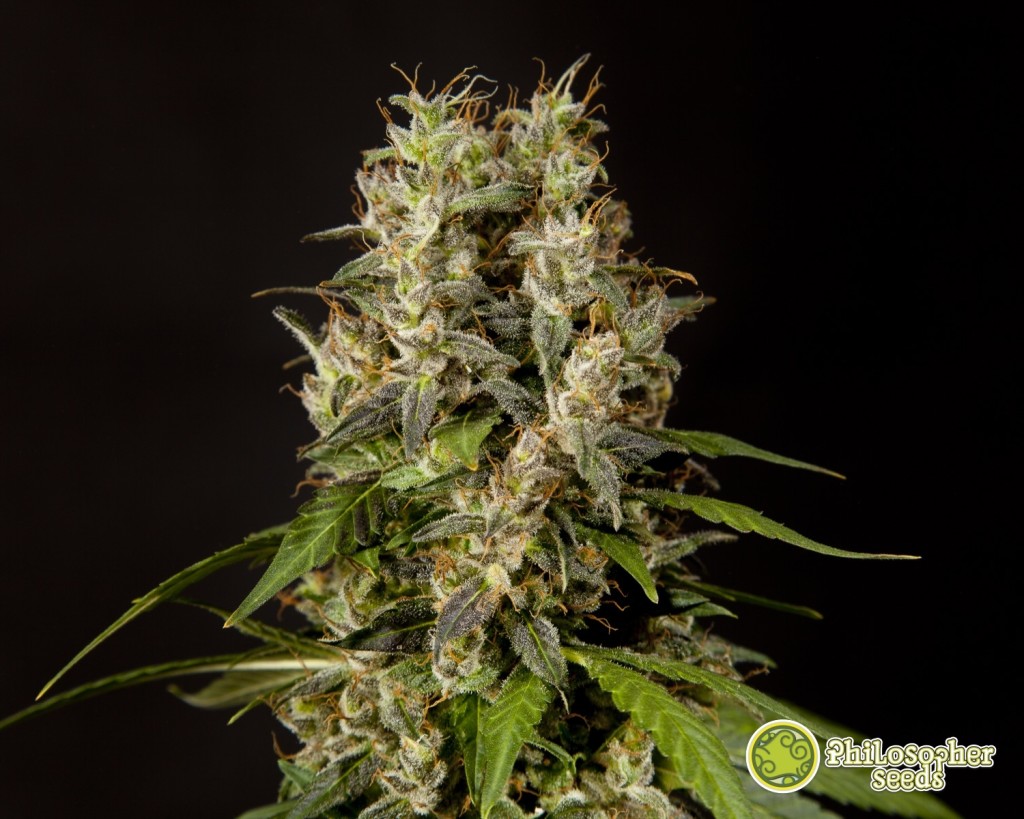
The methods and the standpoint used in organic feeding of marijuana plants are radically opposed to the practices done in conventional farming. We know that in conventional agriculture, the main purpose is to get fast and direct feeding mainly using soluble mineral fertilisers. On the contrary, organic feeding nourishes plants indirectly, feeding the microorganisms of the substrate with organic matter.
The organic matter in the substrate generates the development of a large number of organisms that allow the decomposition of it, ensuring so the continuous supply of nutrients during the entire life cycle of the plant. In addition, organic matter improves the quality and the structure of the substrate, facilitating a better water penetration, even as the oxygenation of the medium and it increases the nutrient retention capacity of the soil.
Basic components of the cannabis substrate
The key element in organic growing of marijuana is to prepare a good mixture of basis components combined with balanced organic nutrients that allow to our plants to grow healthy and strong without need to provide them mineral NPK-based fertilizers.
We show you which are the most commonly used basic components:
- Peat Moss: Accumulation and fossilization of plant residues in humid lands generate the creation of peat. Depending on the age and content of carbon it’s classified in one kind or another
- Blond Peat Moss. It's a peat of recent and fibrous decomposition. It can retain about 700 times its volume of water. It’s of difficult rehydration if it dries completely. The amount of nutrients it contains is very low, although it’s capable of absorbing the nutrients supplied by fertilisers.
- Brown Peat Moss. It’s peat of intermediate decomposition. Its capacity to retain nutrients or water is less than the blond peat moss.
- Black Peat Moss. Is the peat of a long-standing decomposition and constitutes an intermediate stage of the coal. It’s pasty and doesn’t contain fibers. It’s found in ombrotrophic Peatlands.
- Coco Fiber: Coco fiber has been a revolution in growing systems, both at professional as at a domestic level, the reason for this demand is due to the excellent physical and chemical properties of this substrate. Coco fiber is used in hydroponic marijuana crops and sativa cannabis strains that need an extra oxygen in the growing medium to get a good result, as for example the marijuana strain Jack el Frutero . Its production is extracted from the coconut husk through crushing and screening. It’s an ideal growing medium, able to retain a large volume of water by its weight, in addition to maintaining a nearly perfect oxygenation level in the environment of the roots. The proliferation of micro-organisms and bacteria is an easy thing using this type of substrate.
- Compost: This technique reproduces the natural decomposition of organic matter of the nature in a fast way, taking so advantage of all the micro-organisms and bacteria produced in this decomposition. Depending on the origin of the organic matter it’s called compost or mulch, if it’s derived from organic material of vegetable origin. We can also get humus if the decomposition is derived from organic material of animal origin (worm humus, bat guano, sheep manure)
This is a biological process full of life that takes place in aerobic fermentation conditions. It needs a minimum of humidity which ensures a transformation of organic debris in highly absorbable nutrition by the organic substrate. Microbial population is involved in all biological processes from the fermentation of organic matter and is responsible for almost the total of composting activity.
Solid organic fertilisers for cannabis growing
The advantage of these systems is that it allows taking advantage of all organic matter produced by oneself and this that is generated in your own home. It’s a good method to make a saving in crops without having to continuously provide mineral fertilisers which at will end in over-fertilising creating so deficiencies on the marijuana plants and making arid the soils.
Mineral fertilisers should be, in any case, a supplement in the recycling of organic nutrients and not an alternative to these. There are a large number of organic nutrients and organic matter that can be used and they’re free of charge. We have to know that commercial organic fertilisers, usually come from waste products of agricultural processes and industrial food production.
There are a large number of valuable sources of nutrients and organic material that can be used; these organic fertilisers should be treated with special attention. They can be used more as a supplement if it’s necessary to treat or correct any nutrient deficiency. These are the most used commercial organic fertilisers for organic farming. Above all, before using them, you should know the origin of this fertiliser and make sure that it’s free of pathogens, viruses and fungi.
- Bloodmeal
- Bonemeal
- Bat Guano
- Seabird Guano
- Wormhumus
- Homemade Compost
- Horse or Sheep Manure…
- Neem-Meal
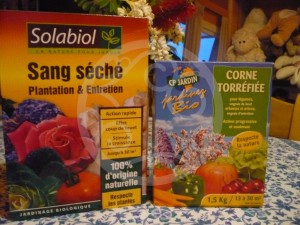
Liquid organic fertilisers for cannabis growing
The cannabis plant can absorb the feed up to 20 times faster through the leaves, via foliar. This means that this type of fertiliser is very effective to treat deficiencies quickly while the substrate is corrected in a slow and organic way, using all organic matter that is around. To get a fast and exuberant growth of marijuana plants, these liquid fertilisers should be applied during the growth period, strengthening so the entire plant and preparing it for the flowering stage.
Liquid fertiliser can be produced by oneself with various methods. On the one hand there can be made vegetable brews warming them up and extracting the nutrients that these contain. On the other hand, you can use solid organic fertilisers mixed with water, once the mixture has fermented. This broth is very active in micro-organisms and can be very effective as a foliar fertiliser and to be applied directly on the soil improving so the organic amendment of the substrate.
Permitted minerals in organic farming
When we speak about mineral fertilisers in organic farming, we are referring to those that are based on ground natural rock. This type of fertiliser should be used only as a supplement to organic plant food and to treat a process in particular of the plant. The nutrients in these fertilisers are easily absorbed, but they quickly can hinder the development of micro-organisms in the environment causing nutrition imbalances.
In many cases, mineral fertilisers, raise a discussion about the quality guarantee of their origin and if they should be really called ECO (ecological), when the transport and the collection of these generates very high energy costs and are destroying the natural habitat where they are extracted.
Bacteria and micro-Organisms for the growing of cannabis
New trends in ecological and organic crops are also based on the contribution of micro-organisms and bacteria, improving so the decomposition processes and the disease control. Micro-organisms and bacteria need organic matter or any sugar or starch source where they can ferment.

This type of compound must be treated with special care, especially respecting the packaging dates for greater effectiveness of the micro-organisms.
The microbes add nutrients to the soil through mineralization; some contribute fixing the nitrogen of the atmosphere as the Rhizobium and Azotobacter.
Others of them as the Mycorrhizas will help supply the phosphorus needs of the plants.
The Sativa strains as the marijuana K 13 Haze that need an extra phosphorus contribution to end successfully the flowering period, benefit from the contribution of these Mycorrhizae fungi obtaining better yields and taking advantage of all the nutrient available in the substrate.
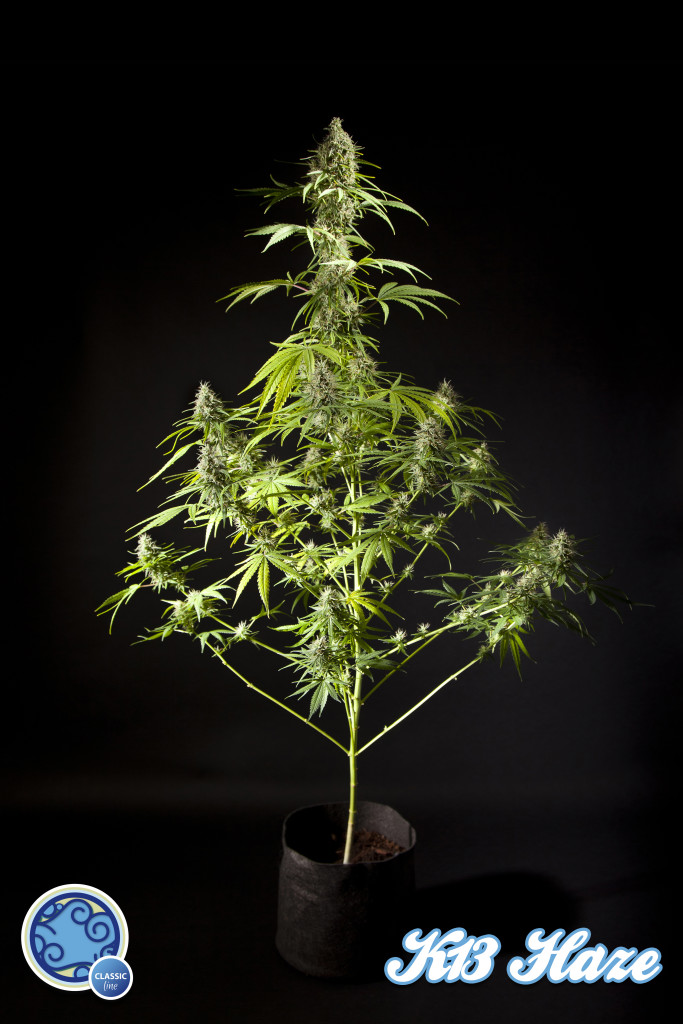
If after having read this post you have any questions on how to grow some of our strains please, leave us a comment, it will be a pleasure for us to give you tips!
Regards and good vibes!
